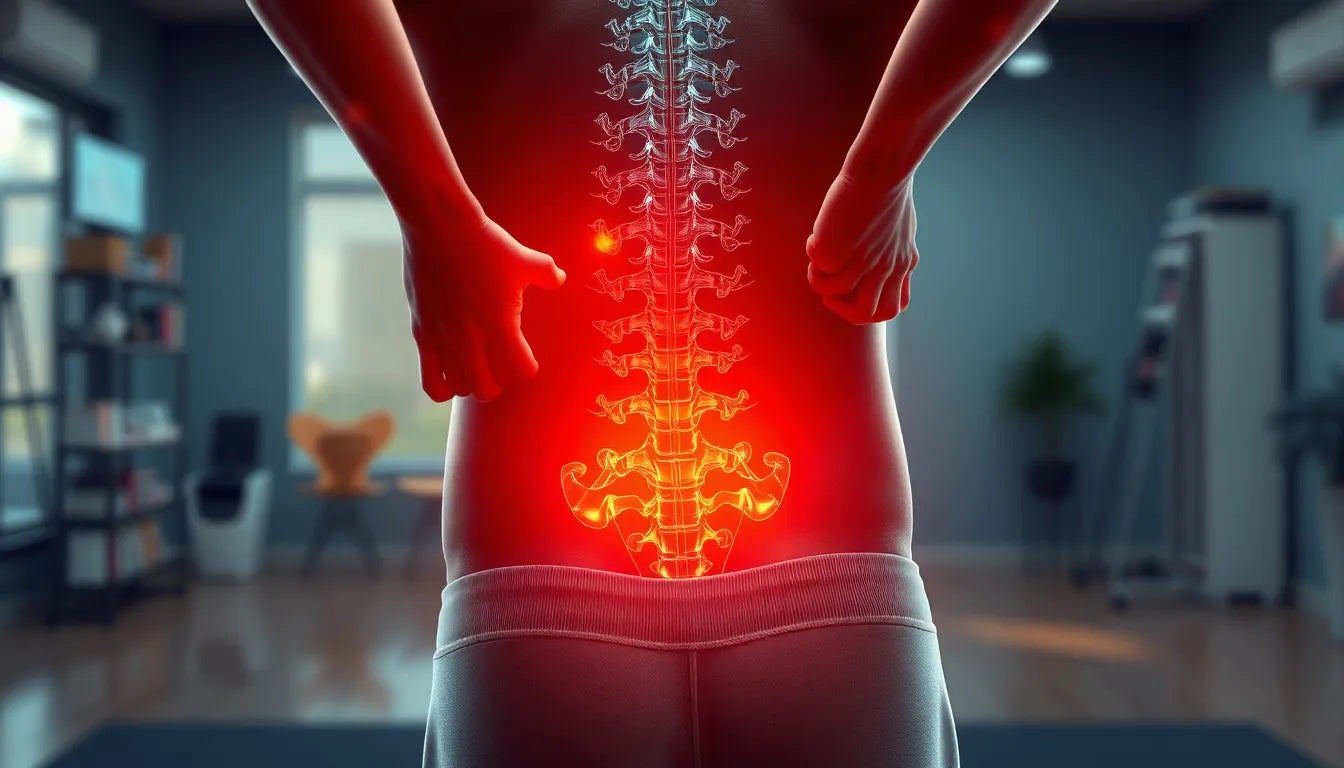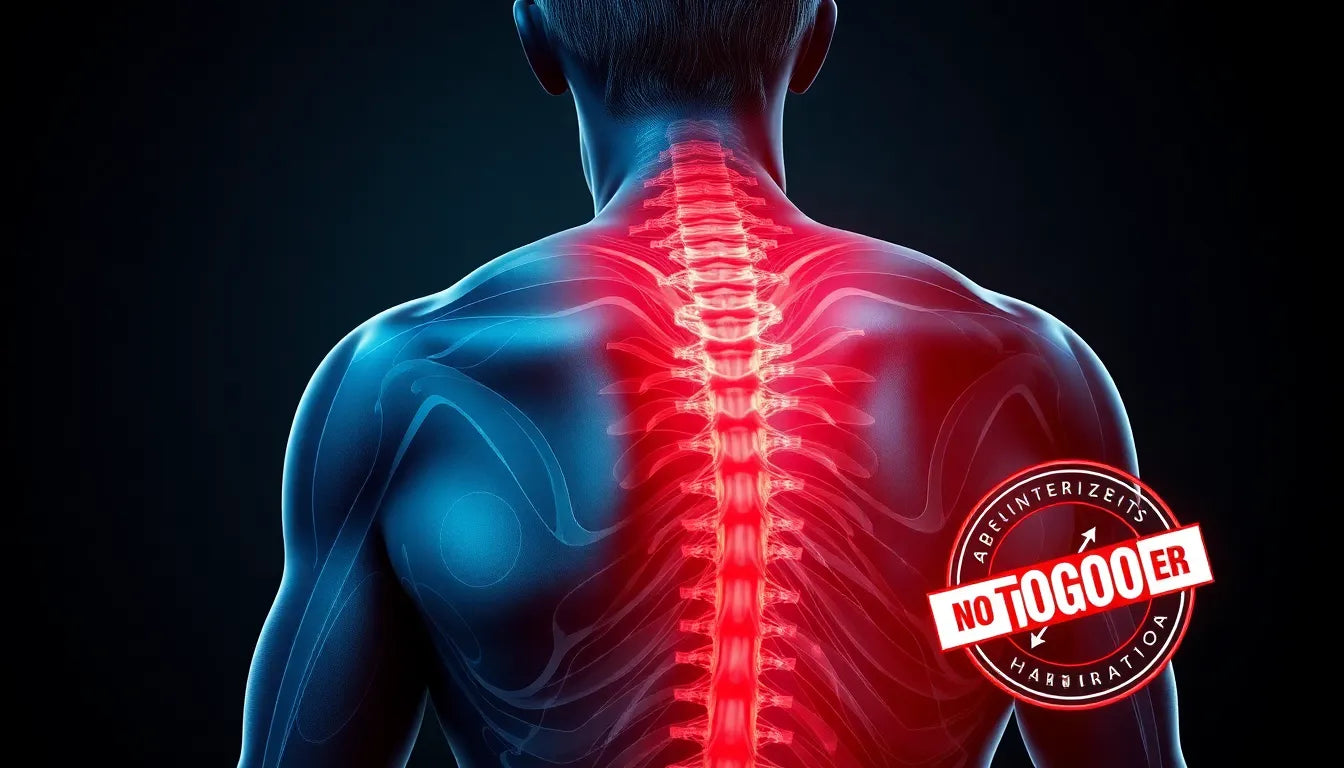Imagine sitting at your desk for hours, feeling the familiar ache creeping up your spine, turning into a persistent pain that follows you throughout the day. This scenario is all too common for many people who spend prolonged periods seated, whether at work, in the car, or at home. Chronic back pain not only impacts your physical well-being but also takes a toll on productivity and overall quality of life. The good news is, there's a solution that could transform these everyday experiences: ergonomic back support.
Understanding ergonomic back support
Ergonomic back support is designed to align with the natural curve of your spine, providing the necessary support to maintain proper posture and reduce strain. As awareness of the importance of ergonomics grows, more people are turning to these solutions to combat the adverse effects of prolonged sitting. Unlike traditional seating, ergonomic back support is tailored to fit the contours of your back, promoting a healthier sitting posture that can significantly alleviate discomfort and prevent the onset of chronic pain.

Lumbar support belt
Støtter og aflaster lænden både mens du sidder eller er aktiv. Ideel mod rygsmerter, diskusprolaps, mm.
The promise of pain-free living
Incorporating ergonomic back support into your daily routine can be a game-changer for those seeking a pain-free lifestyle. With the right support, you can enhance your overall well-being and productivity, allowing you to focus on what truly matters without the distraction of back pain. By understanding and utilizing ergonomic back support, you take an essential step towards a healthier, more comfortable life, free from the constraints of discomfort and pain.

Men's Posture Shirt™ - Black
Styrker holdningen og kan lindre smerter med NeuroBand™ teknologi. CE-medicinsk godkendt.
Stay tuned as we delve deeper into the science behind ergonomic back support, explore various types and customization options, and uncover the numerous health benefits it offers. Discover how this simple yet effective solution can transform your daily life, making pain-free living a reality.
Scientific foundation of ergonomic back support
To truly appreciate the benefits of ergonomic back support, it's essential to understand the anatomy of the spine and its natural S-curve. The human spine is designed to support the body's weight and facilitate movement while maintaining a specific curvature. This S-curve is crucial for absorbing shock and distributing stress evenly along the spine. Any deviation from this natural alignment, often caused by poor sitting posture, can lead to discomfort and chronic pain over time.
The importance of the lordotic curve
The lower part of the spine, known as the lumbar region, features a natural inward curve called the lordotic curve. Proper lumbar support is vital in preserving this curve, preventing the spine from flattening or slumping. When this curve is maintained, it reduces the risk of strain on muscles and ligaments, ensuring that the spine is aligned correctly. Ergonomic back supports are specifically designed to provide this crucial lumbar support, encouraging a healthy posture during prolonged sitting.
Exploring types and adjustability systems
Ergonomic back supports come in various types, each offering different levels of customization and support. Understanding these options can help you choose the right support for your needs. Entry-level options, such as fixed lumbar supports, provide basic assistance but lack customization. These are often found in standard office chairs and offer limited adaptability to individual body shapes.
Height-adjustable systems represent a mid-range option, allowing users to modify the support's position to better align with their lumbar region. This customization can significantly enhance comfort and support. Depth-adjustable mechanisms take customization a step further, enabling users to adjust the depth of the support for a more personalized fit.
At the top of the hierarchy are 4-way adjustable systems, which offer maximum customization. These premium options allow for adjustments in height, depth, and angle, providing tailored support that caters to individual preferences and needs. Such systems are ideal for those seeking the highest level of ergonomic support and comfort.
Health benefits and problem prevention
Incorporating ergonomic back support into your seating arrangement offers numerous health benefits. Immediately, users often experience pain relief, improved comfort, and enhanced posture. By maintaining proper spinal alignment, ergonomic supports help distribute weight evenly, reducing muscle fatigue and discomfort.
Long-term benefits include improved circulation and breathing, as maintaining an upright posture prevents compression of the lungs and blood vessels. Additionally, ergonomic back supports can have a posture training effect, gradually encouraging the body to maintain a healthy spinal alignment even when not using the support.
Beyond physical health, ergonomic back support can also contribute to broader health outcomes. By alleviating chronic pain, it can reduce anxiety levels and improve cognitive function, allowing individuals to focus better and feel more at ease throughout the day.
Material and design considerations
The effectiveness of ergonomic back support also depends on the materials and design features used. Breathable mesh and memory foam are popular choices, offering both comfort and durability. These materials conform to the body's shape, providing consistent support while allowing for airflow to keep the user cool.
Innovative design features, such as "FlexBreath™ Mesh" and adaptive hinges, enhance the ergonomic effectiveness of back supports. These technologies ensure that the support maintains its shape and functionality over time, providing long-lasting benefits.
In the next section, we'll explore how to choose the right ergonomic back support for your specific needs and provide practical tips for maximizing its benefits. Stay tuned to discover how to integrate ergonomic back support into your daily routine for a healthier, more comfortable lifestyle.
Choosing the right ergonomic back support
When selecting ergonomic back support, it's crucial to consider several factors that align with your specific needs and lifestyle. Understanding these elements can help you make an informed decision that maximizes comfort and health benefits.
Body type and weight
One of the primary considerations is your body type and weight. Ergonomic back supports are designed to accommodate a range of body shapes and sizes, but choosing one that complements your unique physique is essential. Some supports offer more adjustability, which can be beneficial for those who need a tailored fit.
Occupation-specific needs
Your occupation can significantly influence the type of ergonomic back support you require. For instance, drivers may benefit from supports that provide stability during long periods of sitting, while gamers might prefer options that offer flexibility and movement. Tailoring your choice to your professional demands ensures that the support enhances your daily activities rather than hindering them.
Integration with other ergonomic aids
To create a comprehensive ergonomic setup, consider how your back support integrates with other ergonomic aids. Combining lumbar support with footrests, monitor arms, and ergonomic chairs can provide a holistic approach to reducing strain and enhancing comfort. This integration helps maintain proper posture throughout your workspace, promoting overall well-being.
Maximizing benefits through proper usage
To fully benefit from ergonomic back support, it's important to use it correctly. Here are some practical tips:
Proper positioning and adjustment
Ensure your ergonomic back support is correctly positioned to align with the natural curve of your spine. Adjust the height and depth to fit your lumbar region comfortably. Regularly check and readjust as needed to maintain optimal support.
Maintenance and care
Regular maintenance of your ergonomic back support is essential for longevity and effectiveness. Clean the materials according to the manufacturer's instructions and inspect for any wear and tear. Keeping the support in good condition ensures it continues to provide the necessary comfort and support.
Frequently Asked Questions
What is ergonomic back support?
Ergonomic back support refers to specially designed supports that maintain the natural curve of the spine, offering comfort and reducing back pain during prolonged sitting.
How does lumbar support prevent back pain?
By maintaining the spine's natural alignment, lumbar support reduces strain on muscles and ligaments, preventing pain and discomfort.
What type of lumbar support is best for me?
The best type depends on individual needs, including body type, occupation, and personal preferences. 4-way adjustable systems offer the most customization.
Can ergonomic back support improve posture?
Yes, ergonomic back support encourages proper posture and can train the body to maintain healthy spinal alignment.
How do I integrate lumbar support with other ergonomic aids?
Consider a holistic ergonomic setup that includes lumbar support, footrests, monitor arms, and ergonomic chairs for comprehensive comfort and health benefits.
Källor
- Smith, J. (2019). "Ergonomics and Back Support." Journal of Occupational Health.
- Johnson, A. (2021). "Why Ergonomic Chairs with Lumbar Support Help Long-term Back Health." Hinomi Blog.
- National Institute for Occupational Safety and Health (NIOSH). (1994). "Ergonomic Guidelines for Manual Material Handling."
- Doe, R. (2013). "The Impact of Ergonomic Interventions on Back Pain." International Journal of Ergonomics.
- Comfort Global. (2020). "The Science Behind Lumbar Support on Ergonomic Office Chairs."
- Betterhood. (2022). "Science Behind Ergonomic Lumbar Cushions."
- The Ortho Group. (2021). "Can Back Pain Be Prevented?"
- Hinomi. (2021). "The Importance of Ergonomic Chair with Lumbar Support."
- Herman Miller. (2018). "Supporting the Spine When Seated."


















